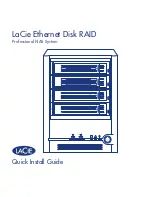Reviews:
No comments
Related manuals for PowerEdge R6525

RS/6000 7043 43P Series
Brand: IBM Pages: 322

System x3400 M3 Types 7378
Brand: IBM Pages: 45

301160U - 1TB Ethernet Disk RAID Network Attached...
Brand: LaCie Pages: 5

NP318T-8DI
Brand: 3onedata Pages: 4

88643RU - System x3850 - 8864
Brand: IBM Pages: 192

TERASTATION HS-D1.0TGL/R5
Brand: Buffalo Pages: 2

NP301
Brand: 3onedata Pages: 24

BladeCenter HS22
Brand: IBM Pages: 1

88728RU
Brand: IBM Pages: 4

eServer 250 xSeries
Brand: IBM Pages: 84

8682 - Eserver xSeries 350
Brand: IBM Pages: 174

325 8639
Brand: IBM Pages: 145

B50
Brand: IBM Pages: 221

Edgeline EL4000
Brand: HPE Pages: 57

ProLiant ML110 Gen10
Brand: HPE Pages: 101

ProLiant ML110 Gen10
Brand: HPE Pages: 159

NPS 650
Brand: Axis Pages: 10

DIRECTORY SERVER 2.0 - GATEWAY
Brand: Red Hat Pages: 66

















